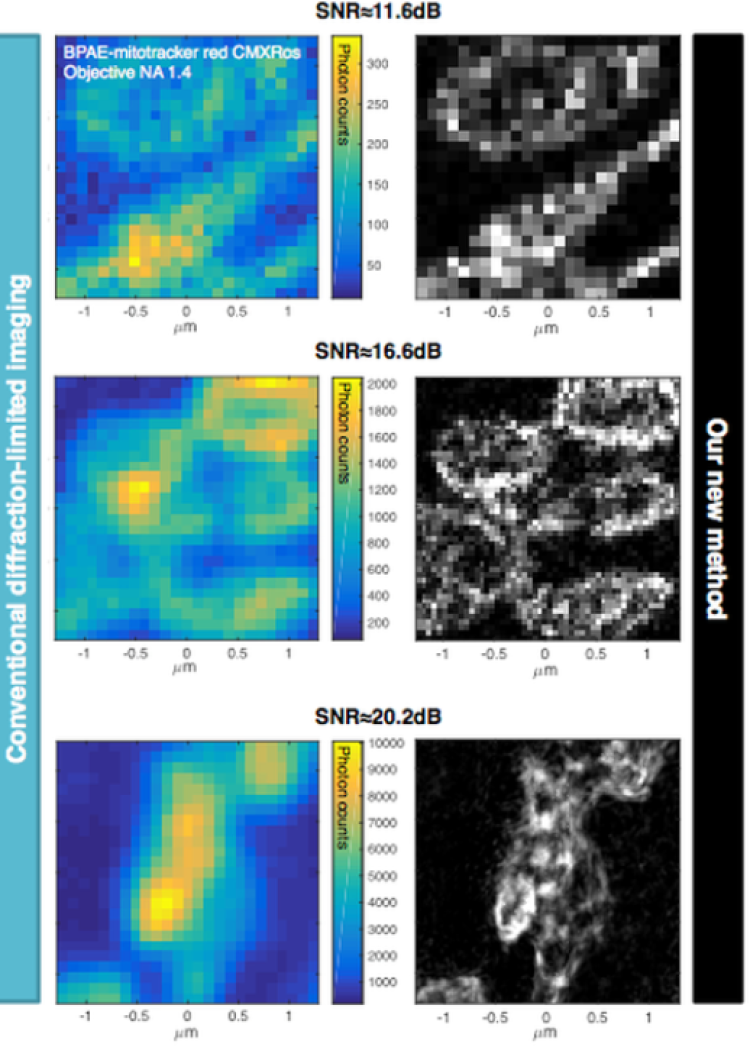Super-resolution Microscopy
Our approach to super-resolution microscopy is fundamentally different from most existing techniques such as stimulated emission depletion microscopy, structured illumination microscopy, or single-molecule localization microscopy. For common fluorescent samples, our method typically achieves ~3-5 fold resolution enhancement over the Rayleigh resolution limit.
Unlike most existing techniques, our method does not require special fluorophores or additional sample treatments. All it needs is a focused laser spot for illumination, and a constrained deconvolution algorithm.
The mechanism of our method is a story that spans nearly a half century. In the early 1970's, Prof. Roy Frieden and his colleagues in the University of Arizona demonstrated that certain constrained deconvolution algorithms can restore the imaged object with nearly 3-fold resolution enhancement over the Rayleigh resolution limit. In the 90's, several mathematicians pointed out that the object sparsity (i.e., the portion of the object that is nearly black) is critical to the super-resolution restoration. Another 20-plus years later, our group coincidentally discovered that using a focused laser spot for illumination can artificially increase the sparsity of fluorescent objects, and consequently leads to much more accurate restorations compared to the conventional widefield, uniform illumination.
While achieving superior super-resolution, the true advantages of our method is its simplicity for biological fluorescence microscopy, and its potential for live-cell imaging.


